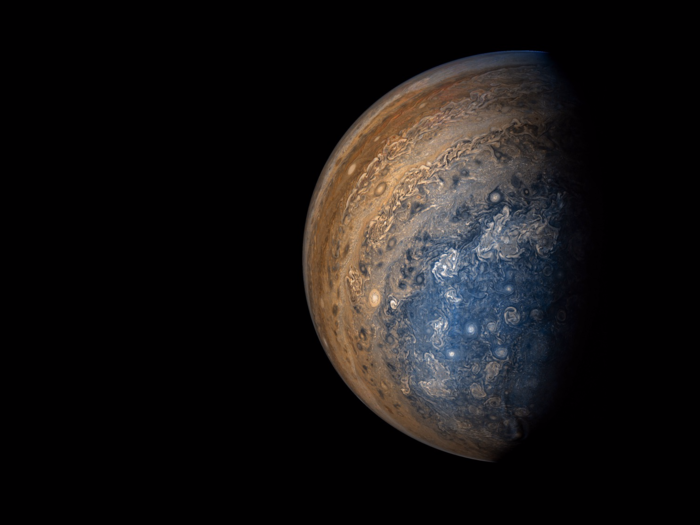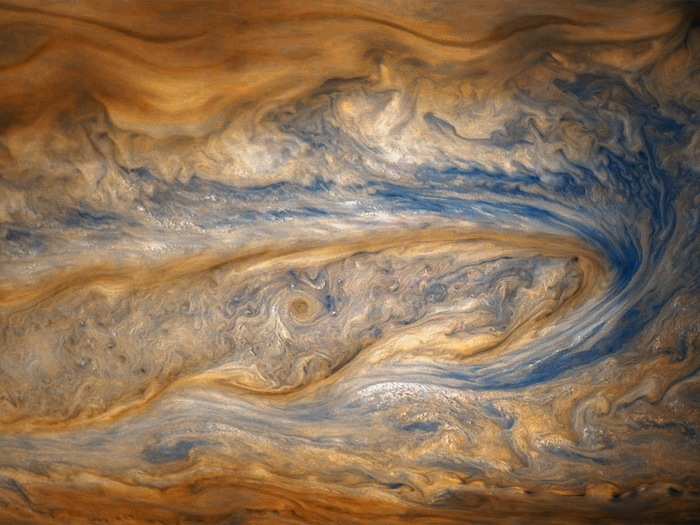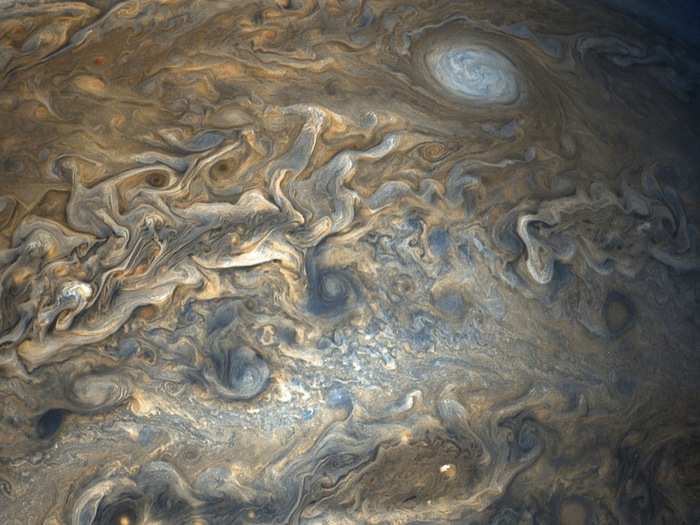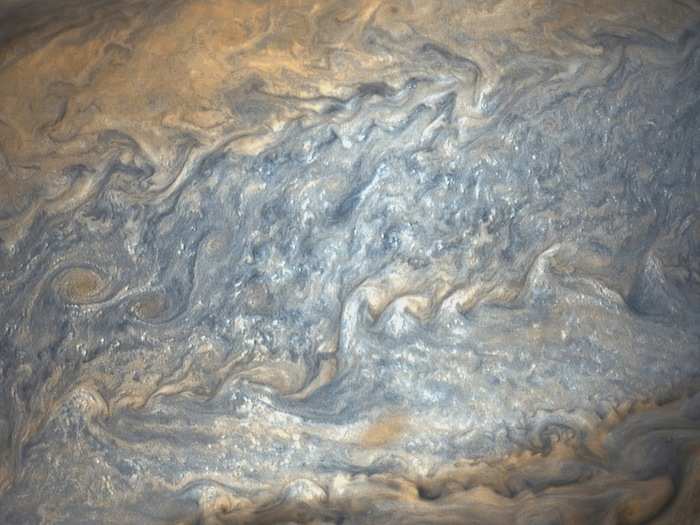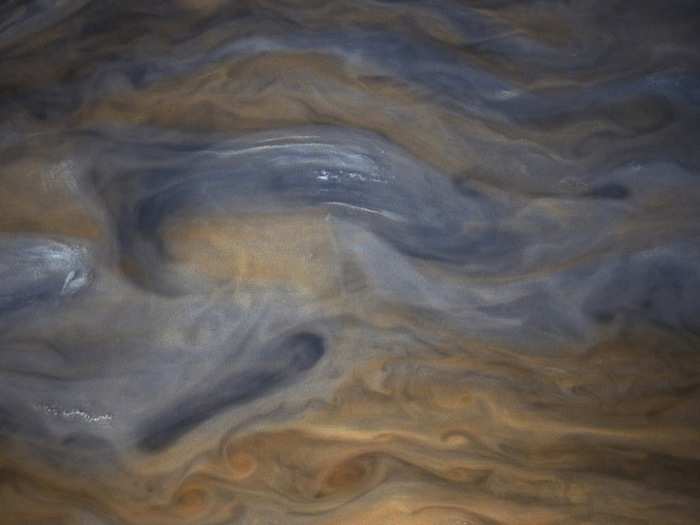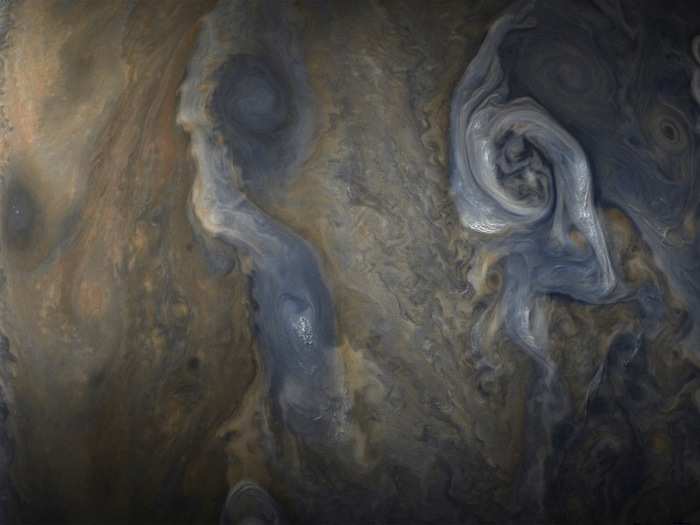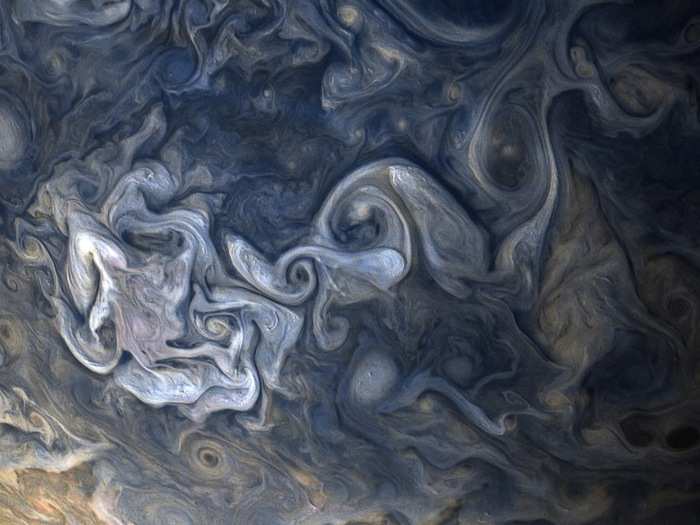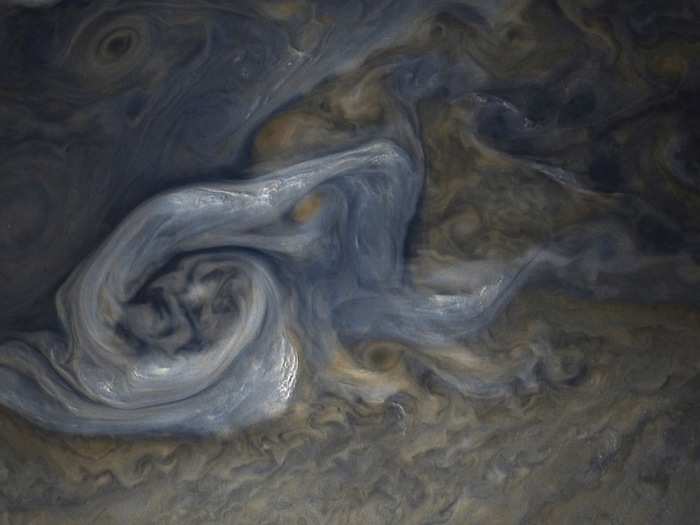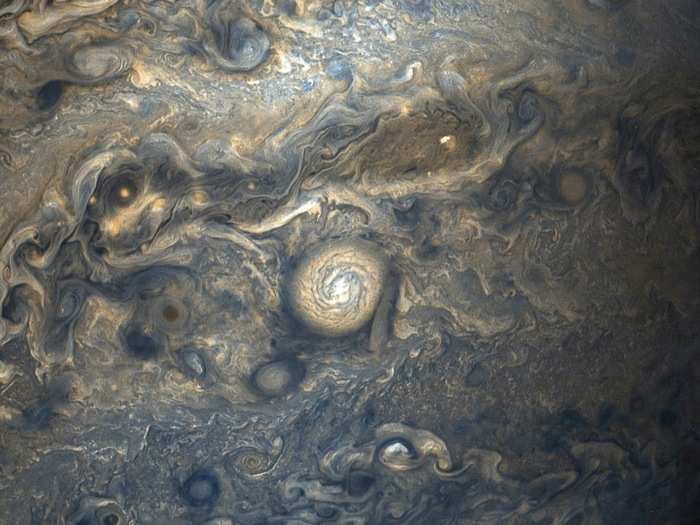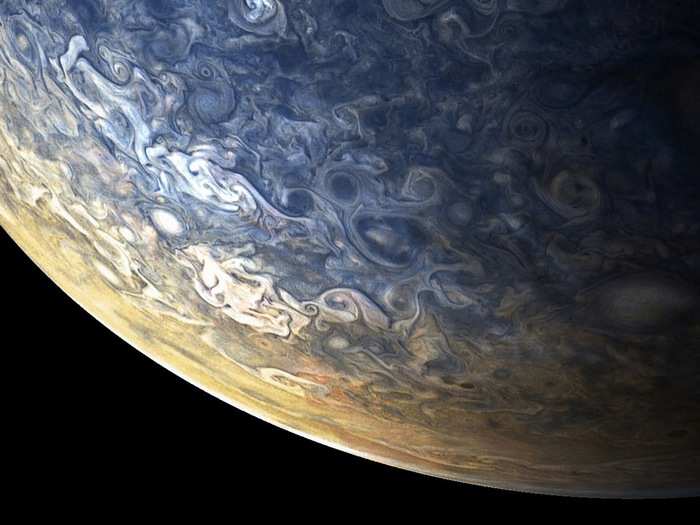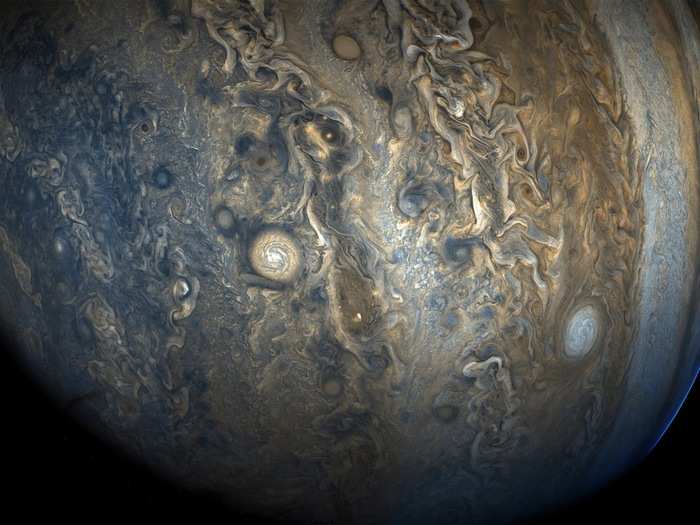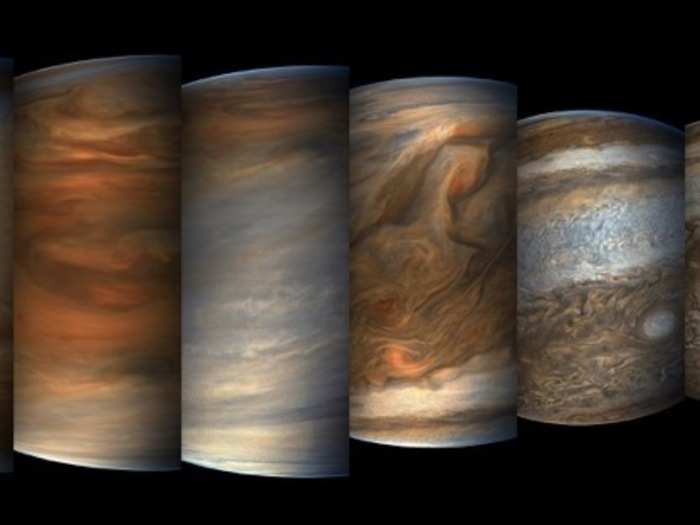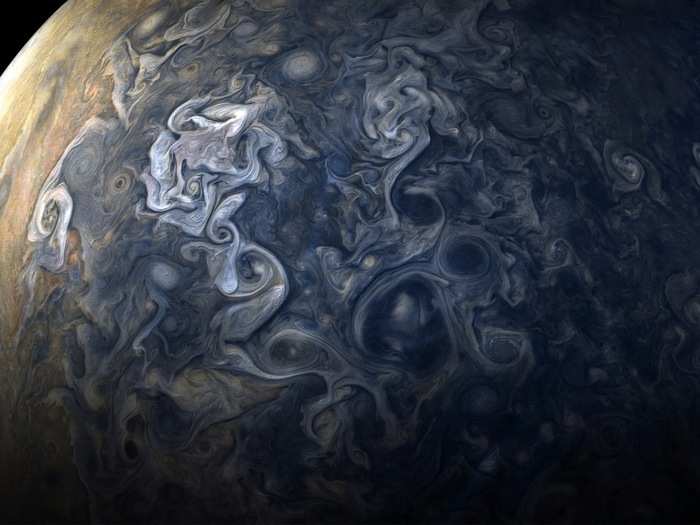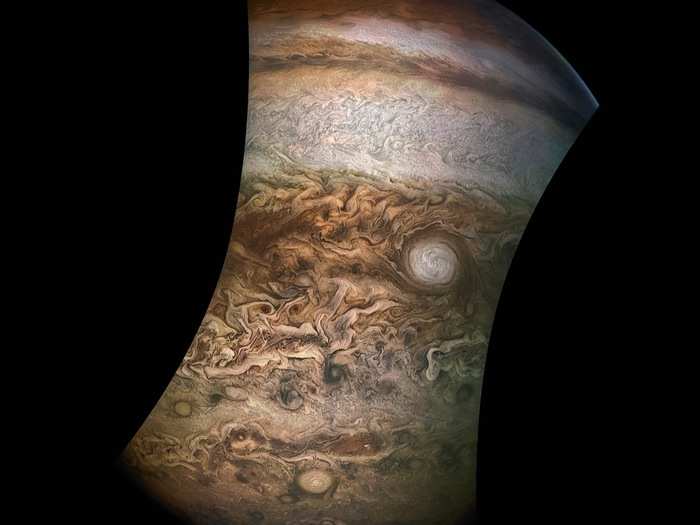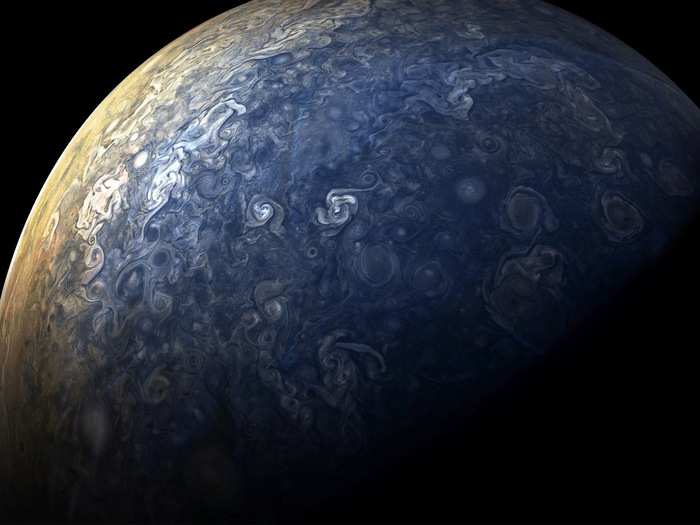Artist and space enthusiast Seán Doran often animates Juno's images into videos that provide a sense of what it's like to fly past Jupiter's cloud tops. This one's from the eighth flyby.
Juno pulls off this maneuver, called a perijove, about every 53 days. Then researchers upload the raw data set to the mission's website.
Juno was supposed to speed up and fly by the gas giant planet every two weeks, but a sticky engine valve prevented that maneuver.
The spacecraft then swept within a few thousand miles of the gas giant's cloud tops, capturing stunning high-resolution views of its cloud tops.
At its closest approach to Jupiter during each flyby, the robot briefly becomes the fastest human-made object in the solar system, reaching speeds of around 130,000 miles per hour.

